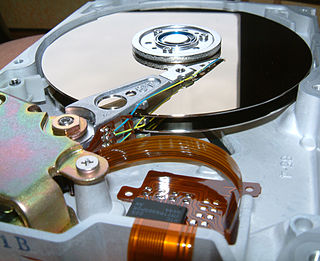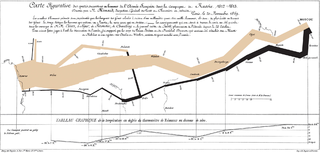
In mass communication, digital media is any communication media that operate in conjunction with various encoded machine-readable data formats. Digital content can be created, viewed, distributed, modified, listened to, and preserved on a digital electronics device, including digital data storage media and digital broadcasting. Digital defines as any data represented by a series of digits, and media refers to methods of broadcasting or communicating this information. Together, digital media refers to mediums of digitized information broadcast through a screen and/or a speaker. This also includes text, audio, video, and graphics that are transmitted over the internet for viewing or listening to on the internet.
Media literacy is an expanded conceptualization of literacy that includes the ability to access and analyze media messages as well as create, reflect and take action, using the power of information and communication to make a difference in the world. Media literacy is not restricted to one medium and is understood as a set of competencies that are essential for work, life, and citizenship. Media literacy education is the process used to advance media literacy competencies, and it is intended to promote awareness of media influence and create an active stance towards both consuming and creating media. Media literacy education is part of the curriculum in the United States and some European Union countries, and an interdisciplinary global community of media scholars and educators engages in knowledge and scholarly and professional journals and national membership associations.
Bloom's taxonomy is a set of three hierarchical models used for classification of educational learning objectives into levels of complexity and specificity. The three lists cover the learning objectives in cognitive, affective and psychomotor domains. The cognitive domain list has been the primary focus of most traditional education and is frequently used to structure curriculum learning objectives, assessments and activities.
The Association of College and Research Libraries defines information literacy as a "set of integrated abilities encompassing the reflective discovery of information, the understanding of how information is produced and valued and the use of information in creating new knowledge and participating ethically in communities of learning". In the United Kingdom, the Chartered Institute of Library and Information Professionals' definition also makes reference to knowing both "when" and "why" information is needed.
eHealth is a relatively recent healthcare practice supported by electronic processes and communication, dating back to at least 1999. Usage of the term varies as it covers not just "Internet medicine" as it was conceived during that time, but also "virtually everything related to computers and medicine". A study in 2005 found 51 unique definitions. Some argue that it is interchangeable with health informatics with a broad definition covering electronic/digital processes in health while others use it in the narrower sense of healthcare practice using the Internet. It can also include health applications and links on mobile phones, referred to as mHealth or m-Health.

Visual literacy is the ability to interpret, negotiate, and make meaning from information presented in the form of an image, extending the meaning of literacy, which commonly signifies interpretation of a written or printed text. Visual literacy is based on the idea that pictures can be "read" and that meaning can be discovered through a process of reading.

Open educational resources (OER) are teaching, learning, and research materials intentionally created and licensed to be free for the end user to own, share, and in most cases, modify. The term "OER" describes publicly accessible materials and resources for any user to use, re-mix, improve, and redistribute under some licenses. These are designed to reduce accessibility barriers by implementing best practices in teaching and to be adapted for local unique contexts.

Computer literacy is defined as the knowledge and ability to use computers and related technology efficiently, with skill levels ranging from elementary use to computer programming and advanced problem solving. Computer literacy can also refer to the comfort level someone has with using computer programs and applications. Another valuable component is understanding how computers work and operate. An individual's level of computer literacy is measured on the scale of how skilled they are when it comes to using computers and other related tools to achieve a goal. Computer literacy may be distinguished from computer programming, which primarily focuses on the design and coding of computer programs rather than the familiarity and skill in their use. Various countries, including the United Kingdom and the United States, have created initiatives to improve national computer literacy rates.
Online counseling is a form of professional mental health counseling that is generally performed through the internet. Computer aided technologies are used by the trained professional counsellors and individuals seeking counselling services to communicate rather than conventional face-to-face interactions[17]. Online counselling is also referred to as teletherapy, e-therapy, cyber therapy, or web counselling[18]. Services are typically offered via email, real-time chat, and video conferencing. Some clients use online counseling in conjunction with traditional psychotherapy, or nutritional counseling. An increasing number of clients are using online counseling as a replacement for office visits.
Digital literacy is an individual's ability to find, evaluate, and communicate information by utilizing typing or digital media platforms. It is a combination of both technical and cognitive abilities in using information and communication technologies to create, evaluate, and share information.

Health literacy is the ability to obtain, read, understand, and use healthcare information in order to make appropriate health decisions and follow instructions for treatment. There are multiple definitions of health literacy, in part, because health literacy involves both the context in which health literacy demands are made and the skills that people bring to that situation.

Transliteracy is "a fluidity of movement across a range of technologies, media and contexts". It is an ability to use diverse techniques to collaborate across different social groups.

The term digital citizen is used with different meanings. According to the definition provided by Karen Mossberger, one of the authors of Digital Citizenship: The Internet, Society, and Participation, digital citizens are "those who use the internet regularly and effectively." In this sense a digital citizen is a person using information technology (IT) in order to engage in society, politics, and government.
Multiliteracy is an approach to literacy theory and pedagogy coined in the mid-1990s by the New London Group. The approach is characterized by two key aspects of literacy - linguistic diversity and multimodal forms of linguistic expressions and representation. It was coined in response to two major changes in the globalized environment. One such change was the growing linguistic and cultural diversity due to increased transnational migration. The second major change was the proliferation of new mediums of communication due to advancement in communication technologies e.g the internet, multimedia, and digial media. As a scholarly approach, multiliteracy focuses on the new "literacy" that is developing in response to the changes in the way people communicate globally due to technological shifts and the interplay between different cultures and languages.

A digital studio provides both a technology-equipped space and technological/rhetorical support to students working individually or in groups on a variety of digital projects, such as designing a website, developing an electronic portfolio for a class, creating a blog, making edits, selecting images for a visual essay, or writing a script for a podcast.
Web literacy comprises the skills and competencies needed for reading, writing and participating on the web. It has been described as "both content and activity" – i.e., web users should not just learn about the web but also about how to make their own website.

The digital divide is a term used to describe the disadvantage in access to information which people without access to ICT suffer. Nigeria's digital divide refers to the inequality of Nigerian individuals, groups, or organizations with regard to access to Information and communications technology (ICT) infrastructure or to the internet for daily activities. The digital divide has been attributed to many factors among which is the high cost of computer equipment, lack of ICT skill and poor knowledge of available search engines. Lack of access to ICT makes it difficult for people to access information. The benefits of having access to ICT are numerous. ICT has the potential to promote other sectors of the economy such as agriculture, education, health, bank, defence etc. In times of emergency, ICT becomes an indispensable tool for overcoming the barriers of time and distance. Education, lack of electrical infrastructure, income, urban drift, and a variety of other social and political factors contribute to Nigeria's growing digital divide.
Metaliteracy is the ability to evaluate information for its bias, reliability, and credibility and apply them in the context of production and sharing of knowledge. It is especially useful in the context of the internet and social media. A formal concept of it was developed as an expanded information literacy framework by State University of New York academics Thomas P. Mackey and Trudi E. Jacobson. It has been used to prepare people to be informed consumers and responsible producers of information in a variety of social communities.
Digital inclusion involves the activities necessary to ensure equitable access to and use of information and communication technologies for participation in social and economic life including for education, social services, health, social and community participation. Digital inclusion includes access to affordable broadband Internet services, Internet-enabled devices, access to digital literacy training, quality technical support, and applications and online content designed to enable and encourage self-sufficiency, participation, and collaboration. Related concepts include digital divide, digital exclusion and digital inequality however digital inclusion focuses more on the strategies, policies and programs required to address the digital divide.

Digital Media in education is measured by a person's ability to access, analyze, evaluate, and produce media content and communication in a variety of forms. This media may involve incorporating multiple digital softwares, devices, and platforms as a tool for learning. The use of digital media in education is growing rapidly in today's age, competing with books for the leading form of communication. This form of education is slowly combating the traditional forms of education that have been around for a long time. With the introduction of virtual education, there has been a need for more incorporation of new digital platforms in online classrooms.









